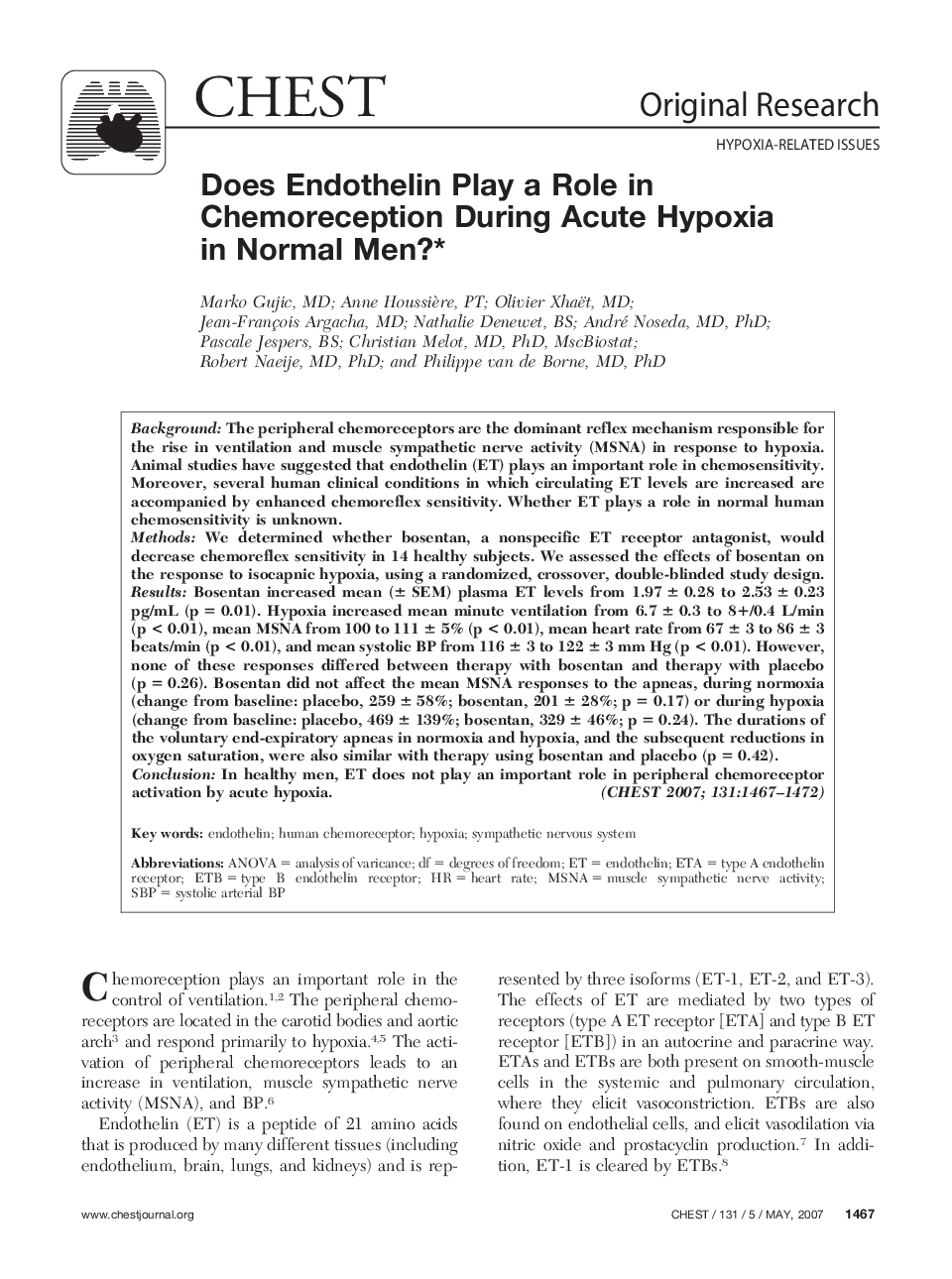| Article ID | Journal | Published Year | Pages | File Type |
|---|---|---|---|---|
| 2904721 | Chest | 2007 | 6 Pages |
BackgroundThe peripheral chemoreceptors are the dominant reflex mechanism responsible for the rise in ventilation and muscle sympathetic nerve activity (MSNA) in response to hypoxia. Animal studies have suggested that endothelin (ET) plays an important role in chemosensitivity. Moreover, several human clinical conditions in which circulating ET levels are increased are accompanied by enhanced chemoreflex sensitivity. Whether ET plays a role in normal human chemosensitivity is unknown.MethodsWe determined whether bosentan, a nonspecific ET receptor antagonist, would decrease chemoreflex sensitivity in 14 healthy subjects. We assessed the effects of bosentan on the response to isocapnic hypoxia, using a randomized, crossover, double-blinded study design.ResultsBosentan increased mean (± SEM) plasma ET levels from 1.97 ± 0.28 to 2.53 ± 0.23 pg/mL (p = 0.01). Hypoxia increased mean minute ventilation from 6.7 ± 0.3 to 8+/0.4 L/min (p < 0.01), mean MSNA from 100 to 111 ± 5% (p < 0.01), mean heart rate from 67 ± 3 to 86 ± 3 beats/min (p < 0.01), and mean systolic BP from 116 ± 3 to 122 ± 3 mm Hg (p < 0.01). However, none of these responses differed between therapy with bosentan and therapy with placebo (p = 0.26). Bosentan did not affect the mean MSNA responses to the apneas, during normoxia (change from baseline: placebo, 259 ± 58%; bosentan, 201 ± 28%; p = 0.17) or during hypoxia (change from baseline: placebo, 469 ± 139%; bosentan, 329 ± 46%; p = 0.24). The durations of the voluntary end-expiratory apneas in normoxia and hypoxia, and the subsequent reductions in oxygen saturation, were also similar with therapy using bosentan and placebo (p = 0.42).ConclusionIn healthy men, ET does not play an important role in peripheral chemoreceptor activation by acute hypoxia.
